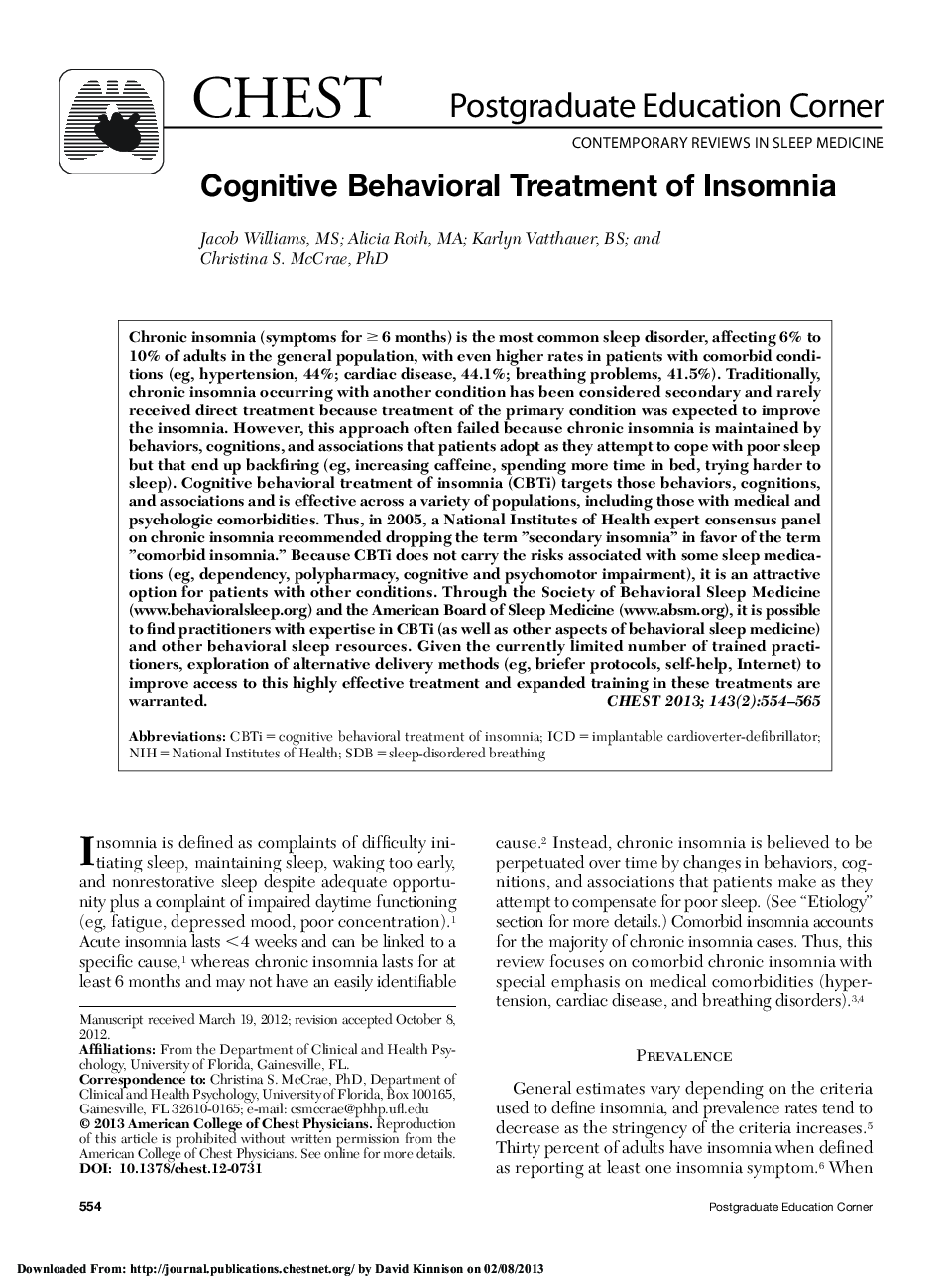| کد مقاله | کد نشریه | سال انتشار | مقاله انگلیسی | نسخه تمام متن |
|---|---|---|---|---|
| 5955915 | 1173339 | 2013 | 12 صفحه PDF | دانلود رایگان |
عنوان انگلیسی مقاله ISI
Cognitive Behavioral Treatment of Insomnia
ترجمه فارسی عنوان
رفتار رفتاری شناختی بی خوابی
دانلود مقاله + سفارش ترجمه
دانلود مقاله ISI انگلیسی
رایگان برای ایرانیان
موضوعات مرتبط
علوم پزشکی و سلامت
پزشکی و دندانپزشکی
کاردیولوژی و پزشکی قلب و عروق
چکیده انگلیسی
Chronic insomnia (symptoms for â¥6 months) is the most common sleep disorder, affecting 6% to 10% of adults in the general population, with even higher rates in patients with comorbid conditions (eg, hypertension, 44%; cardiac disease, 44.1%; breathing problems, 41.5%). Traditionally, chronic insomnia occurring with another condition has been considered secondary and rarely received direct treatment because treatment of the primary condition was expected to improve the insomnia. However, this approach often failed because chronic insomnia is maintained by behaviors, cognitions, and associations that patients adopt as they attempt to cope with poor sleep but that end up backfiring (eg, increasing caffeine, spending more time in bed, trying harder to sleep). Cognitive behavioral treatment of insomnia (CBTi) targets those behaviors, cognitions, and associations and is effective across a variety of populations, including those with medical and psychologic comorbidities. Thus, in 2005, a National Institutes of Health expert consensus panel on chronic insomnia recommended dropping the term “secondary insomnia” in favor of the term “comorbid insomnia.” Because CBTi does not carry the risks associated with some sleep medications (eg, dependency, polypharmacy, cognitive and psychomotor impairment), it is an attractive option for patients with other conditions. Through the Society of Behavioral Sleep Medicine (www.behavioralsleep.org) and the American Board of Sleep Medicine (www.absm.org), it is possible to find practitioners with expertise in CBTi (as well as other aspects of behavioral sleep medicine) and other behavioral sleep resources. Given the currently limited number of trained practitioners, exploration of alternative delivery methods (eg, briefer protocols, self-help, Internet) to improve access to this highly effective treatment and expanded training in these treatments are warranted.
ناشر
Database: Elsevier - ScienceDirect (ساینس دایرکت)
Journal: Chest - Volume 143, Issue 2, February 2013, Pages 554-565
Journal: Chest - Volume 143, Issue 2, February 2013, Pages 554-565
نویسندگان
Jacob MS, Alicia MA, Karlyn BS, Christina S. PhD,
